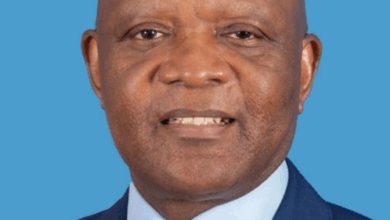Breaking Ghana’s Poultry Farming Paradox: A value chain analysis of the Nkoko Nkitinkiti initiative


1. EXECUTIVE SUMMARY
Ghana spends over $600 million every year importing chicken that it could easily produce. This is the nation’s poultry paradox. While chicken is Ghana’s most consumed meat, four out of every five birds on our plates are imported. The cost is not only economic, draining scarce foreign exchange, but also social, undermining rural livelihoods, weakening youth opportunities, and leaving the nation vulnerable to external shocks.
The government’s Nkoko Nkitinkiti initiative, which seeks to distribute three million birds nationwide, has generated optimism. But the programme’s true impact will not be judged by the number of birds distributed. Its success and sustainability will depend on whether it can transform Ghana’s poultry value chain, strengthening upstream inputs, improving midstream processing and logistics, and securing downstream markets.
At the core of the challenge is poultry feed, which accounts for 60–70% of production costs? Ghana’s maize and soybean yields remain far below global averages. Feed mills operate under capacity, and cold chain systems are almost non-existent. These bottlenecks explain why imported frozen chicken still lands in Ghana 27–30% cheaper than local ones, even with tariffs.
Comparative lessons from Brazil, South Africa, and Thailand prove that no country has built a resilient poultry industry without first fixing its systemic gaps. Ghana must follow suit — and Nkoko Nkitinkiti presents a rare, once-in-a-generation opportunity to reset the system.
This policy brief argues that Nkoko Nkitinkiti is not merely a poultry distribution programme, but a potential value chain revolution. If reframed and properly implemented, it can reduce imports, secure food sovereignty, create tens of thousands of youth jobs, and reposition agriculture as the backbone of national resilience.
Agriculture is the backbone of Ghana’s economy, employing more than 33% of the workforce (GSS, 2023). However, within this backbone lies a paradox that strikes at the heart of food sovereignty: poultry, the country’s most consumed source of protein, is overwhelmingly imported. In 2024, Ghana imported nearly 270,000 metric tons of chicken meat — representing about 82% of total consumption — while domestic farmers produced only 60,000 metric tons, or 18% United States Department of Agriculture (USDA, 2024). Put differently, for every five chickens consumed in Ghana, four are imported and only one is produced locally.
This structural imbalance has deep consequences. First, the economic cost is staggering: over $600 million in foreign exchange outflows annually, weakening the cedi and constraining resources for development. Second, rural livelihoods are undermined. Thousands of smallholder farmers and local processors are priced out of the market by frozen imports, which often arrive 27–30% cheaper than local chicken, even after tariffs. Third, Ghana’s food security remains hostage to external shocks, from global price fluctuations to shipping disruptions, leaving households vulnerable.
The social consequences are equally profound. Ghana’s youth unemployment rate stands between 12–19%, with underemployment much higher (World Bank, 2023). The poultry sector, with its extensive upstream, midstream, and downstream linkages, could provide a viable pathway for agribusiness jobs. Nevertheless, inefficiencies in feed, processing, logistics, and markets lock young people out of opportunities.
The government’s Nkoko Nkitinkiti initiative, launched with the ambitious goal of distributing three million birds nationwide, is a bold intervention aimed at addressing this paradox. But history tempers optimism. Ghana’s poultry industry has seen waves of interventions such as subsidies, tariff adjustments, and donor projects, most of which delivered short-term gains but failed to alter the system’s fundamentals. The risk is clear: it is hope that Nkoko Nkitinkiti is not treated as another bird distribution exercise, fading into the archives of agricultural pilot projects.
The initiative must instead be reframed in the context of a value chain transformation strategy. Poultry is not just about birds. It is about the ecosystems that sustain them: the maize and soybean farmers upstream, the feed millers, processors, transporters, and the institutional markets downstream. As FAO (2022) notes, feed represents 60–70% of poultry production costs, and Ghana’s maize and soybean yields (2.0–2.5 MT/ha and 1.5 MT/ha, respectively) remain far below global averages (5.5 and 2.8 MT/ha). On top of that, post-harvest losses of up to 20% (MoFA, 2022), underutilised feed mills, poor rural roads, and limited cold storage, and the challenge becomes clear: the problem is systemic.
This policy brief applies Value Chain Analysis (VCA) to examine Ghana’s poultry paradox and to assess whether Nkoko Nkitinkiti can evolve into a credible pathway for transformation. The brief is structured into seven sections: after the introduction, it presents a detailed value chain analysis, explores youth employment opportunities, draws comparative lessons from global leaders, reviews Ghana’s policy and institutional frameworks, and concludes with actionable recommendations.
The stakes are high: Ghana can either remain trapped in poultry dependency or leverage Nkoko Nkitinkiti as a catalyst for food security, youth empowerment, and economic independence.
A Value Chain Analysis (VCA) framework helps explore the poultry paradox by examining how inputs, production, processing, logistics, and markets connect to deliver chicken from farm to table. The Nkoko Nkitinkiti initiative can only succeed if it strengthens all three layers of the chain: upstream, midstream, and downstream.
3.1 Upstream: Inputs and Primary Production
The poultry sector’s foundation lies in chicken feed, which represents between 60–70% of total production costs (FAO, 2022). Without competitive feed systems, local poultry cannot compete with frozen imports.
- Maize and Soybeans
- Ghana produces about 2.9 million MT of maize annually and 200,000 MT of soybeans (GSS, 2023).
- Yields remain far below international benchmarks: maize yields average 2.0–2.5 MT/ha vs. the global average of 5.5 MT/ha; soybeans produce 1.5 MT/ha compared to the global average of 2.8 MT/ha (FAO, 2022).
- Post-harvest losses account for 15–20% of output, with aflatoxin contamination, caused when grains are stored in warm, humid, and poorly ventilated conditions — posing a persistent food safety and competitiveness challenge (MoFA, 2022).
- Other Inputs
- Day-old chicks are expensive and largely imported, driving up production costs.
- Veterinary services remain limited, raising disease and biosecurity risks.
Implication: Unless Nkoko Nkitinkiti is anchored in a robust feed and input strategy, distributing birds will worsen pressure on already fragile feed systems and make poultry unsustainable.
3.2 Midstream: Processing, Feed Milling, and Logistics
The midstream segment determines whether inputs translate into cost-effective, high-quality poultry products.
- Feed Milling
- Ghana’s feed milling industry has significant installed capacity but operates at only 40–50% utilisation (MoFA, 2022).
- The reasons: inconsistent maize/soy supply, high input costs, and lack of feed quality standards.
- Aflatoxin contamination and poorly formulated feed undermine bird growth and farm productivity.
- Processing
- Most poultry is sold live or slaughtered informally, with limited modern processing facilities.
- The few facilities that exist are underutilised because local poultry is too expensive compared to imports.
- As a result, local chicken is virtually absent from formal retail chains and supermarkets.
- Logistics and Storage
- Poor rural roads inflate the cost of moving maize and soybeans to feed mills and farms.
- Ghana has silo capacity for only a fraction of its national grain output, leaving harvests vulnerable to spoilage and price fluctuations.
- Cold chain infrastructure is almost non-existent, making it difficult to distribute processed chicken and compete with frozen imports that benefit from global cold chains.
Implication: Weak midstream systems amplify costs across the value chain, reinforcing Ghana’s dependence on cheap imports.
3.3 Downstream: Markets and Demand Anchors
Demand for poultry in Ghana is strong and growing, with consumption rising at an estimated 5–7% annually (USDA, 2024). Yet local producers are unable to capture this demand.
- Market Dominance of Imports
- Imports supply over 80% of the domestic market.
- Even after a 35% tariff, imported frozen chicken lands 27–30% cheaper than local alternatives.
- Institutional Markets
- Ghana’s School Feeding Programme, hospitals, prisons, and security agencies offer huge procurement opportunities.
- However, these institutions are weakly linked to domestic poultry supply chains.
- Structured procurement mandates could anchor stable demand for local producers.
- Retail Markets
- Traditional wet markets (open-air) remain the largest distribution channel.
- Modern supermarkets, restaurants, and fast-food outlets are expanding, but local poultry remains underrepresented due to price competitiveness issues.
Implication: Unless Nkoko Nkitinkiti establishes structured market anchors, particularly through institutional procurement, local poultry will remain squeezed out of both informal and formal markets.
The analysis shows that Ghana’s poultry industry is constrained by systemic weaknesses across all three layers of the value chain:
- Upstream: Low crop yields, high feed costs, post-harvest losses, expensive inputs.
- Midstream: Underutilised feed mills, weak processing infrastructure, poor roads, lack of storage and cold chain systems.
- Downstream: Imports dominate, weak institutional procurement, and poor integration into modern retail markets.
Ghana’s demographic profile is both a challenge and an opportunity. More than 57% of the population is under 25 years old (GSS, 2023), yet youth unemployment is estimated between 12–19%, with underemployment far higher (World Bank, 2023). The poultry value chain, if properly structured, provides one of the most viable avenues for transforming this challenge into a national advantage.
Unlike other agricultural subsectors, poultry connects a web of upstream, midstream, and downstream activities that are particularly suited for youth participation. From feed production to logistics and retail, the opportunities are diverse and scalable.
4.1 Upstream Opportunities
- Modernised maize and soybean farming: With access to improved seeds, irrigation, and mechanisation, youth can increase yields and directly supply feed mills.
- Input distribution services: Young entrepreneurs can aggregate and distribute day-old chicks, vaccines, and veterinary inputs to smallholder farms, bridging critical supply gaps.
4.2 Midstream Opportunities
- Feed micro-mills: Youth-led enterprises can establish small-scale feed mixing and distribution units, particularly in peri-urban zones where larger mills are absent.
- Processing and value addition: Young entrepreneurs can set up semi-automated slaughterhouses, packaging units, and branding services for domestic markets.
- Digital logistics platforms: Tech-savvy youth can build apps that connect farmers to feed mills, transporters, and buyers, reducing inefficiencies.
4.3 Downstream Opportunities
- Retail outlets: Youth can open butcheries, cold stores, and kiosks that sell branded, locally processed chicken.
- Institutional supply chains: With proper financing and aggregation, youth enterprises could supply schools, hospitals, prisons, and security agencies under structured procurement arrangements.
4.4 Unlocking Youth Potential
To fully embed youth in the poultry value chain, three enablers are critical:
- Finance: Blended credit models, including guarantees and agribusiness loans, are needed to de-risk youth investment.
- Skills: Practical training in poultry husbandry, feed formulation, agribusiness management, and digital tools.
- Markets: Guaranteed demand through institutional procurement to stabilise revenue streams.
If these enablers are secured, the Nkoko Nkitinkiti initiative could evolve beyond bird distribution into a youth “agripreneurship” revolution, creating dignified jobs, boosting incomes, and reshaping the perception of agriculture as a viable career path.
No country has built a competitive poultry sector without first investing in the value chain fundamentals: feed, logistics, processing, and structured markets. The experiences of Brazil, South Africa, and Thailand illustrate how systemic reforms, not one-off programmes, transform poultry into a driver of food security and economic growth.
5.1 Brazil: Feed as the Engine of Global Poultry Exports
Brazil is now the world’s largest poultry exporter, producing over 14 million MT annually (FAO, 2022). Its success is rooted in a deliberate strategy to stabilise feed. Maize yields average 5.6 MT/ha, and soybean yields reach 3.2 MT/ha, far above Ghana’s levels of 2.0–2.5 and 1.5 MT/ha, respectively. Brazil invested heavily in research, irrigation, and mechanisation, reducing reliance on imports for feed inputs.
With abundant, low-cost feed, Brazilian feed mills operate efficiently and consistently, supplying integrated poultry producers. Investments in modern logistics, such as silos, highways, and ports, ensured year-round availability and competitive pricing. By prioritising feed security, Brazil transformed poultry into a reliable export commodity, generating billions in foreign exchange.
Lesson for Ghana: Poultry transformation begins with feed. Without boosting maize and soybean productivity, Nkoko Nkitinkiti will face the same cost disadvantages that have long crippled Ghana’s poultry sector.
5.2 South Africa: Domestic Market Dominance through Integration
South Africa produces over 1.7 million MT of chicken annually, supplying the majority of its domestic market (South African Poultry Association, 2022). Success came from an integrated value chain: local maize and soybean production feeds efficient feed mills, which supply large-scale, vertically integrated poultry farms.
The sector benefits from strong cold chain and processing infrastructure, ensuring that domestic chicken is readily available in supermarkets and restaurants. While imports exist, they remain limited to around 20% of national consumption, far lower than Ghana’s 80%.
Lesson for Ghana: Integration matters. A competitive poultry sector requires connecting farmers, processors, feed millers, and retailers through efficient logistics and cold chain systems.
5.3 Thailand: Value Addition and Youth Participation
Thailand produces more than 3 million MT of processed poultry annually and exports to high-value markets in Japan and Europe (FAO, 2022). The country’s competitive edge comes from value addition: instead of exporting raw chicken, Thailand focuses on marinated, packaged, and branded poultry products.
Thailand also embedded youth in its poultry transformation. Government and private-sector programmes supported youth-led agribusiness in logistics, processing, and digital platforms. By integrating young people into every link of the chain, poultry became not just a food sector but a generator of rural innovation and employment.
Lesson for Ghana: Poultry is not only about feeding the nation but also about empowering a new generation of agripreneurs through value-added processing and technology-driven logistics.
5.4 Synthesis of Lessons
- Feed first: Brazil shows that competitive feed systems are the bedrock of poultry transformation.
- Integration matters: South Africa proves that connecting producers, processors, and markets secures domestic dominance.
- Youth and value addition: Thailand demonstrates how poultry can become a vehicle for jobs, exports, and innovation.
For Ghana, the central message is clear: Nkoko Nkitinkiti must evolve into a feed-anchored, logistics-enabled, and youth-driven strategy if it is to break the poultry dependency trap.
The poultry sub-sector in Ghana has long been the focus of multiple policy interventions, from tariffs to subsidies. However, none have delivered structural transformation. The Nkoko Nkitinkiti initiative will only succeed if it is embedded in a coherent, long-term framework that addresses systemic weaknesses across the value chain.
6.1 Current Policy Environment
- Tariff Protection: Ghana currently applies a 35% tariff on imported poultry, offering some protection for domestic producers. Nevertheless, imports remain 27–30% cheaper than local alternatives, suggesting tariffs alone are insufficient.
- Planting for Food and Jobs (PFJ): This flagship programme improved seed and fertiliser access for maize and soybeans. However, productivity gains have been modest, with maize yields still lagging at 2.0–2.5 MT/ha against global averages of 5.5 MT/ha (FAO, 2022).
- School Feeding Programme: Designed to provide institutional demand, the programme has not been systematically linked to local poultry producers. Weak procurement linkages undermine its potential as a demand anchor.
6.2 Institutional Landscape
- Ministry of Food and Agriculture (MoFA): Provides policy direction but operates in silos, with limited integration with logistics, trade, and finance institutions.
- Ghana Standards Authority (GSA) & Food and Drugs Authority (FDA): Mandated to enforce feed and food quality standards but face resource and enforcement gaps.
- Private Associations: The Poultry Farmers Association of Ghana and Feed Millers Association are active but underutilised in national policy dialogues.
- Financial Institutions: Commercial banks perceive poultry as high-risk, restricting access to affordable financing for farmers and youth-led enterprises.
6.3 Key Reforms Needed for Nkoko Nkitinkiti
- Feed Standards and Regulation
- Enforce strict aflatoxin control and establish mandatory certification for feed mills.
- Introduce standard pricing and quality benchmarks to improve farm productivity.
- Public–Private Partnerships (PPPs)
- Expand silos, warehouses, and cold chain infrastructure through co-investment with private firms.
- Incentivise processing plants that add value to local poultry.
- Blended Financing Models
- Develop agribusiness financing schemes combining concessional loans, guarantees, and insurance.
- Create youth-targeted financing windows for small-scale feed milling, processing, and logistics.
- Institutional Procurement Mandates
- Legally require schools, hospitals, prisons, and security agencies to procure a fixed share of poultry locally.
- Use government demand to stabilise the market for domestic producers.
- Policy Consistency and Institutional Coordination
- Move away from short-term projects to long-term, institutionalised programmes with predictable funding.
- Establish a multi-stakeholder steering committee involving MoFA, GSA, FDA, financial institutions, and private associations to align policy implementation.
6.4 From Project to National Programme
For Nkoko Nkitinkiti to evolve beyond a distribution project, it must be institutionalised as a national poultry transformation programme, anchored in feed security, logistics infrastructure, financing mechanisms, and structured markets. Only then can it move from a temporary intervention to a legacy programme that reshapes Ghana’s food system.
7. CONCLUSION & RECOMMENDATIONS
Ghana’s poultry sector is at a crossroads. The paradox is stark: despite abundant land, capable farmers, and rising demand, the country imports more than 80% of its poultry, draining over $600 million annually in scarce foreign exchange. The Nkoko Nkitinkiti initiative, with its plan to distribute three million birds, is a bold attempt to reset the industry. But history warns us: unless it is treated as a value chain transformation strategy, it risks becoming yet another short-lived agricultural intervention.
The value chain analysis reveals that Ghana’s poultry sector is constrained at every level: upstream by weak feed systems and low crop yields, midstream by underutilised feed mills, poor logistics, and limited processing, and downstream by import dominance and weak institutional procurement. Comparative lessons from Brazil, South Africa, and Thailand show that success is possible, but only when systemic gaps are addressed.
To turn Nkoko Nkitinkiti into a legacy programme, Ghana must go beyond distributing birds and commit to building a competitive, integrated poultry value chain.
8. Recommendations
From the aforementioned analysis, the following are recommended to ensure that the Nkoko Nkitinkiti initiative delivers long-term transformation rather than short-lived impact:
1 Secure the Feed Base
- Expand maize and soybean production through improved seeds, irrigation, and mechanisation.
- Reduce post-harvest losses with modern silos, storage facilities, and aflatoxin control.
- Enforce feed quality standards and certification to boost efficiency and competitiveness.
2 Leverage Public Procurement as a Market Anchor
- Mandate schools, hospitals, prisons, and security agencies to source a significant portion of their poultry locally.
- Use government demand as a stabilising market force to reduce reliance on imports.
3 Strengthen Midstream Infrastructure
- Modernise feed mills and incentivise new processing facilities.
- Invest in rural roads and cold chain systems to reduce costs and prevent spoilage across the value chain.
4 Unlock Finance for Youth and SMEs
- Develop blended financing models (soft loans + guarantees) to de-risk agribusiness investment.
- Establish dedicated financing windows for young agripreneurs in feed milling, logistics, processing, and retail.
5 Ensure Policy Coherence and Institutional Leadership
- Form a multi-stakeholder steering committee (MoFA, GSA, FDA, financial institutions, and private sector actors).
- Transition from fragmented projects to institutionalised programmes with predictable funding and accountability mechanisms.
DISCLAIMER: The Views, Comments, Opinions, Contributions and Statements made by Readers and Contributors on this platform do not necessarily represent the views or policy of Multimedia Group Limited.
DISCLAIMER: The Views, Comments, Opinions, Contributions and Statements made by Readers and Contributors on this platform do not necessarily represent the views or policy of Multimedia Group Limited.
Source link





